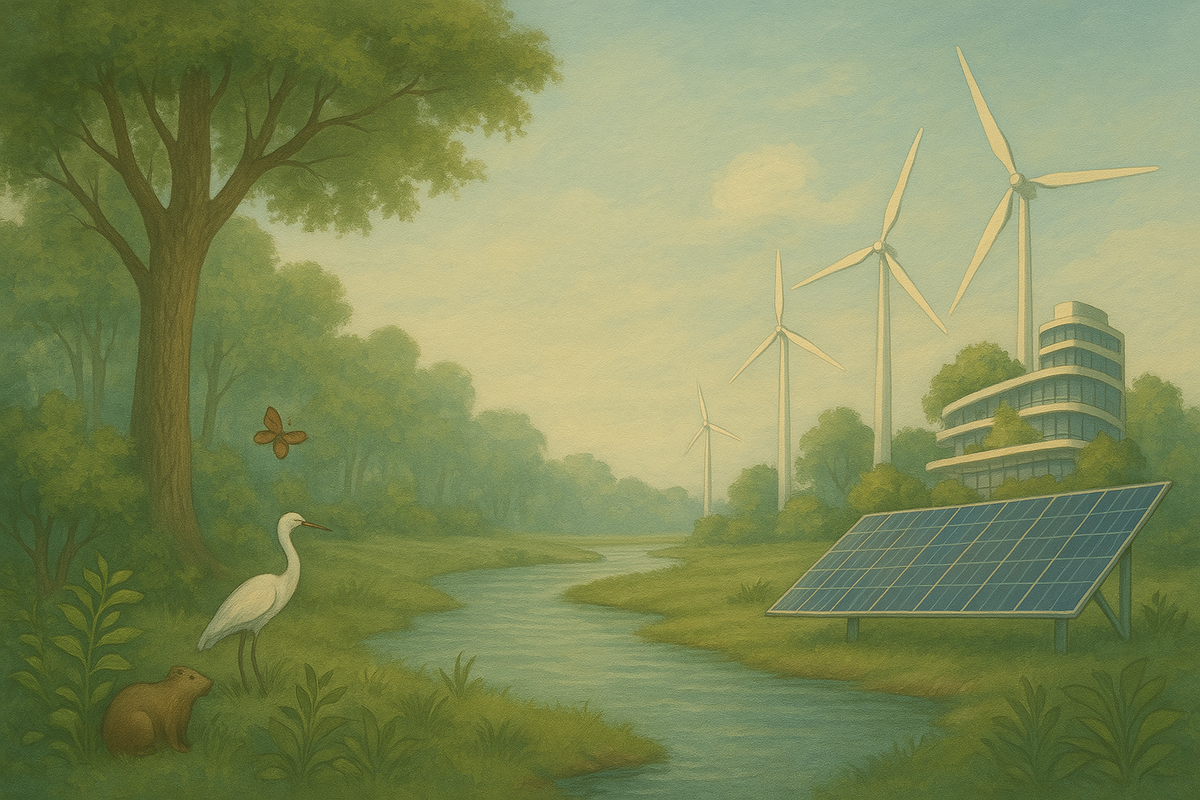Viewpoint: The Dance of Progress and Preservation
In our rush to celebrate scientific breakthroughs and revolutionary discoveries, we often overlook a crucial truth: science isn't just about forging ahead—it's equally about preserving and building upon the wisdom of the past.

In our rush to celebrate scientific breakthroughs and revolutionary discoveries, we often overlook a crucial truth: science isn't just about forging ahead—it's equally about preserving and building upon the wisdom of the past. This delicate balance between progress and conservation lies at the heart of scientific advancement, though it's rarely discussed in popular science narratives. In fact, the very way we tell stories about scientific discovery often obscures this fundamental dynamic, creating a misleading impression of science as a relentless march forward.
Popular media tends to portray scientific advancement as a series of eureka moments—brilliant individuals overturning established wisdom with revolutionary insights. We celebrate the dramatic narratives: Newton's apple, Einstein's thought experiments, Fleming's moldy petri dish. While these stories capture our imagination, they paint an incomplete picture of how science actually progresses. They minimize the careful, methodical work of verification, refinement, and preservation that makes breakthrough discoveries possible in the first place.
Consider how textbooks present scientific history: as a neat progression of theories, each superseding the last. Aristotelian physics gives way to Newtonian mechanics, which yields to Einstein's relativity, which must now accommodate quantum mechanics. This oversimplified narrative suggests that science advances by wholesale replacement of old ideas with new ones. But the reality is far more nuanced. Newton's laws weren't abolished by Einstein's theories—they were incorporated into a broader framework. They remain perfectly valid and useful for describing the everyday world we inhabit.
This misconception about scientific progress has real consequences. It can lead to a dismissive attitude toward established knowledge, a constant chase for the next big breakthrough at the expense of crucial confirmatory research. It can also create false expectations about the pace and nature of scientific advancement, potentially undermining public trust when progress appears slower or more incremental than expected.
The truth is that science advances through a complex interplay of conservation and innovation. Like a master builder, it carefully preserves and builds upon strong foundations while simultaneously reaching toward new heights. Each generation of scientists inherits a vast repository of tested theories, proven methodologies, and accumulated data. Their task is not to demolish this inheritance but to expand it—sometimes by adding new layers, sometimes by reinforcing existing structures, and occasionally by carefully replacing outdated elements with stronger materials.
Understanding this dual nature of scientific progress—its simultaneous embrace of preservation and innovation—is crucial for anyone seeking to grasp how science really works. It's a perspective that offers valuable insights not just about the past but also about the future of scientific discovery. As we venture into new frontiers of knowledge, from artificial intelligence to quantum computing, from gene editing to space exploration, we would do well to remember that true progress often depends as much on what we preserve as what we change.
The Conservative Revolutionary
The early 20th century provides fascinating examples of this complex interplay, particularly through the lens of theoretical physics. Consider the paradox of one of science's most iconic figures: while we remember him as a revolutionary thinker, he often played the role of conservative sceptic. When confronted with the strange implications of quantum mechanics, he famously resisted, unable to accept a universe governed by probability rather than certainty. His oft-quoted assertion that "God does not play dice with the universe" wasn't merely a quip—it was a profound expression of his conservative scientific philosophy.
This resistance to quantum theory's revolutionary ideas reveals an important truth: even our most celebrated scientific innovators can become guardians of established principles. Yet this isn't necessarily a weakness. Just as nature maintains essential characteristics while evolving, science progresses most effectively when it balances preservation with innovation. The very resistance to new ideas often serves to refine and strengthen them, forcing proponents to develop more rigorous proofs and explanations.
The Many Paths to Truth
The history of relativity theory offers another illuminating example of this dynamic. While one physicist laid crucial groundwork through careful extension of existing theories, emphasizing continuity with past knowledge, another took a more radical approach by completely abandoning the concept of ether. Both approaches contributed valuable insights, demonstrating how different paths can lead to scientific truth. This historical episode challenges our tendency to view scientific progress as a simple linear path forward.
More intriguingly, the development of the theory of relativity shows how revolutionary ideas often emerge from conservative principles. The theory's radical conclusions—time dilation, space curvature, mass-energy equivalence—arose from a deeply conservative premise: that the laws of physics should remain consistent across all reference frames. This illustrates how preserving fundamental principles can lead to revolutionary insights.
The Surprising Progressive Power of Conservative Ideas
Perhaps most intriguingly, ideas once dismissed as too conservative can later prove surprisingly progressive. Take the philosophical concept of time that was initially rejected by physics but later found resonance with quantum theory's implications. This remarkable reversal reminds us that today's conservative viewpoint might be tomorrow's cutting-edge insight. It also suggests that our categories of "progressive" and "conservative" in science might be more fluid than we typically assume.
The history of science is replete with similar examples. Ideas that seemed radically progressive in their time often turned out to be conservative in their preservation of older principles, while apparently conservative positions sometimes contained the seeds of revolutionary change. This pattern suggests we need a more nuanced way of thinking about scientific progress.
Building Better Foundations
The lesson here isn't that we should favor either conservation or progress, but rather that we need both. Good science requires maintaining proven methodologies and valuable insights while remaining open to new possibilities that might challenge our fundamental assumptions. It's about building upon foundations rather than constantly starting anew.
This has profound implications for how we conduct and teach science. Instead of presenting scientific knowledge as a series of revolutionary breakthroughs, we might better serve students by showing how new discoveries emerge from and build upon existing knowledge. This approach would better prepare future scientists to navigate the complex relationship between conservation and innovation in their own work.
The Role of Skepticism
Skepticism plays a crucial role in this dynamic. While often viewed as a conservative force in science, healthy scepticism serves both to preserve valuable knowledge and to drive progress by demanding rigorous evidence for new claims. The key lies in maintaining what we might call "balanced skepticism"—neither so rigid that it rejects all new ideas, nor so flexible that it abandons proven principles without sufficient cause.
A New Understanding of Scientific Progress
This perspective encourages us to rethink how we view scientific advancement. Instead of viewing progress as a straight line forward, we might better understand it as a spiral—advancing while maintaining connection with core principles. This model helps explain how science can simultaneously preserve fundamental truths while expanding into new territory.
Practical Implications
For practising scientists, this understanding has practical implications. It suggests that breakthrough innovations might come not just from challenging existing ideas, but also from deeply understanding and building upon them. It encourages a research approach that values both creative speculation and careful preservation of proven methods.
The Next Frontier
The next time we encounter scientific debate, we would do well to look beyond simple labels of "progressive" or "conservative." The true path of science lies not in choosing between these approaches, but in finding ways to embrace both—preserving what works while remaining open to revolutionary new insights that might reshape our understanding of the world.
In the end, science mirrors the very nature it studies: complex, adaptive, and resistant to simple categorization. By embracing this complexity, we can better understand and contribute to the ongoing dialogue between conservation and progress that drives scientific advancement forward. This more nuanced view of scientific progress might not make for simple storytelling, but it better reflects the real process by which human knowledge grows and evolves.
The challenge for modern science lies not in choosing between progress and conservation, but in finding ways to nurture both impulses—to preserve what is valuable while remaining open to transformative new insights. In this balance lies the true genius of scientific advancement, and perhaps its greatest lesson for human knowledge more broadly.
🔴 Viewpoint is a random series of spontaneous considerations about subjects that linger in my mind just long enough for me me to write them down. They express my own often inconsistent thoughts, ideas, assumptions and speculations. Nothing else. Quote me at your own peril.





